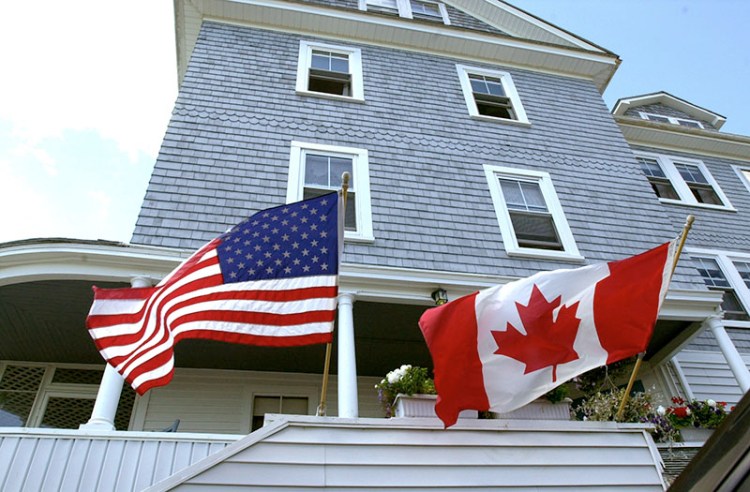TORONTO – When President Donald Trump issued his first executive order banning nationals from majority-Muslim countries from entering the United States, some Canadians reacted by vowing to boycott traveling south of the border.
Within days, Canadians of all stripes – academics, school board superintendents, thriller writers, even Girl Scouts – followed through with those pledges, abruptly canceling trips to the United States.
Travel and tourism officials feared the ban would dent America’s image as a foreigner-friendly country and lead to a “Trump slump,” dealing a blow to an industry that had only just recovered from a $600 billion loss between Sept. 11, 2001, and 2010, according to the U.S. Travel Association.
There has been a slump. While international tourism arrivals worldwide increased 7 percent in 2017 – a seven-year high – the United States is missing out on that boom, according to the U.N. World Tourism Organization. Data from the U.S. Commerce Department’s National Travel and Tourism Office show international arrivals to the United States fell 3.8 percent during the first three quarters of 2017, compared with the same period in 2016.
Travel to the United States from every region of the world is declining, but one country is bucking the trend: Canada.
Despite the frantic calls for boycotts, overnight trips from Canada rose 4.8 percent to 20.2 million in 2017, reversing a three-year decline, according to Statistics Canada.
Experts say the factor that has traditionally had the strongest influence on the travel habits of globe-trotting Canadians is the relative value of their currency, making it possible that the weakening U.S. dollar is providing an incentive for their cross-border travel.
But many remain puzzled because the U.S. dollar slumped against a number of currencies in 2017, like the euro, and there has been no increase in travel to the United States from Europe.
“It is difficult for us to pinpoint exactly why the Canadian arrival data has diverged from the rest of the world,” said Seth Borko, a senior research analyst with Skift, a travel market research and industry intelligence company. Proximity and ease of travel between the two countries may also be driving the trend, he said.
Concern abounded in the wake of the entry ban that Canadians were cooling on U.S. destinations – so much so that some American tourism officials traveled to Canada multiple times in an unprecedented effort to combat the rhetoric coming from the White House.
“It’s rare that we go up to Canada and do two events in the same year,” said Chris Heywood, the senior vice president of global communications with NYC & Company, New York City’s official tourism organization. “But last year was one of those years.”
Matt Noble, the president of EF Educational Tours Canada, a travel company that organizes trips for students, said that he expects annual growth in trips to U.S. destinations to hit double-digit percentages in 2019.
“While we are definitely fielding more questions about how the experience of crossing the border might be changing with new regulations, we are not seeing any meaningful decline in demand for our U.S. itineraries,” he said.
After the entry ban was announced, the Girl Guides – the Canadian counterparts of the Girl Scouts – called off all trips to the United States indefinitely, citing a “commitment to inclusivity.” A number of Canadian school boards, authors and academics did the same.
“I refused to enter apartheid South Africa, too,” Jen Marchbank, a professor at Simon Fraser University in British Columbia told the Toronto Star. “I see little difference between the U.S. today and apartheid South Africa in terms of ethics and morals.”
The Girl Guides still prohibit U.S.-bound travel. Last month, the Toronto District School Board – Canada’s largest school board – slightly eased restrictions on student travel to the United States to allow it for professional development and academic competitions, after students complained that they were missing out on events that would bolster their college applications.
Travel and tourism officials are careful not to lay the blame for the slump in travel to the United States on Trump’s entry ban or on any of the policies his administration has advanced to toughen border security or immigration law. They point out that while the decline in international visits accelerated in 2017, it began in 2015, and note that the strength of the American dollar in the first half of 2017 made the country less affordable for some travelers.
Tourism is America’s second-largest export and a $1.54 trillion a year industry. The drop in international arrivals to U.S. destinations translated to $4.6 billion in lost spending and 40,000 jobs in November 2017, compared with the year before, according to research from the U.S. Travel Association.
It announced earlier this year that a collection of industry groups including the National Restaurant Association and U.S. Chamber of Commerce were banding together to form the Visit U.S. Coalition in an attempt to reverse the downward trend.
Copy the Story LinkSend questions/comments to the editors.



Success. Please wait for the page to reload. If the page does not reload within 5 seconds, please refresh the page.
Enter your email and password to access comments.
Hi, to comment on stories you must . This profile is in addition to your subscription and website login.
Already have a commenting profile? .
Invalid username/password.
Please check your email to confirm and complete your registration.
Only subscribers are eligible to post comments. Please subscribe or login first for digital access. Here’s why.
Use the form below to reset your password. When you've submitted your account email, we will send an email with a reset code.